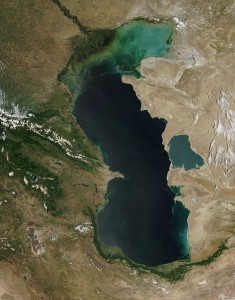MONDAY, 6 DECEMBER 2010
The measurements were taken for 167 large inland lakes, such as the Caspian Sea and Lake Titicaca, and were calibrated against temperature recordings from buoys in the Great Lakes of North America. By collecting data in the summer months of both the northern and southern hemisphere, the team was able to find a global trend as well as regional patterns. The largest and most consistent area of rapid warming was Northern Europe, at approximately 0.08oC per year, while the tropics showed a weaker trend, averaging 0.025oC per year.The study, published in Geophysical Research Letters, provides an independent data source for assessing climate change throughout the world and allows direct comparison with air temperature trends. Interestingly, in parts of both Northern Europe and North America water temperatures were found to increase more rapidly than regional air temperatures. The results may have implications for aquatic ecosystems, where small changes in temperature can lead to algal blooms or allow introduced species to thrive.
Written by Robert Jones

